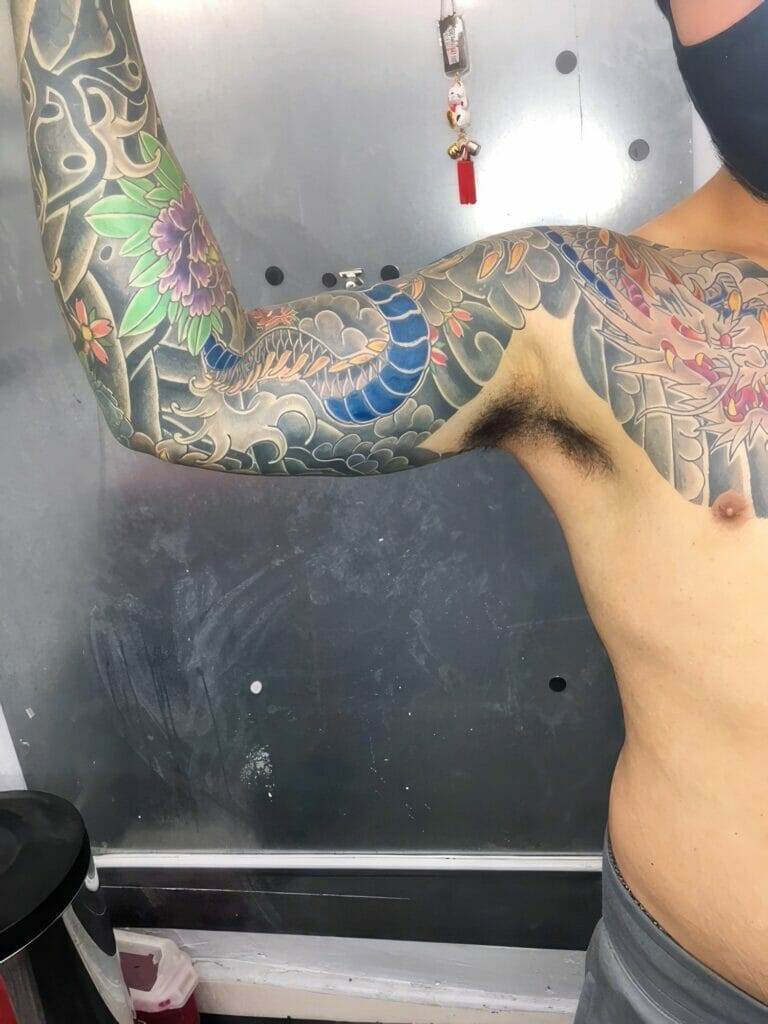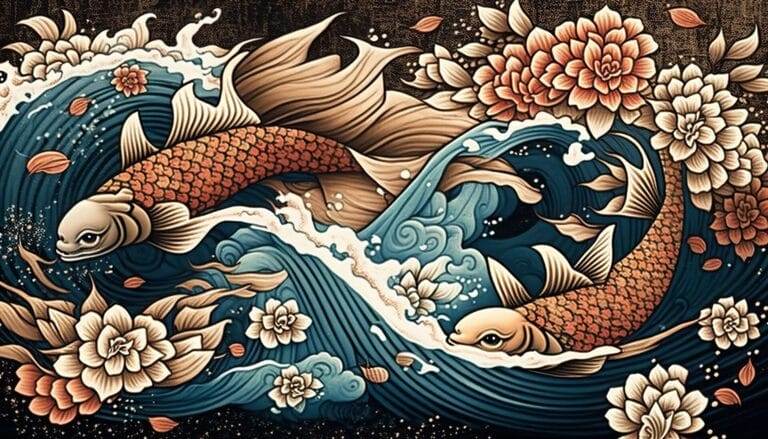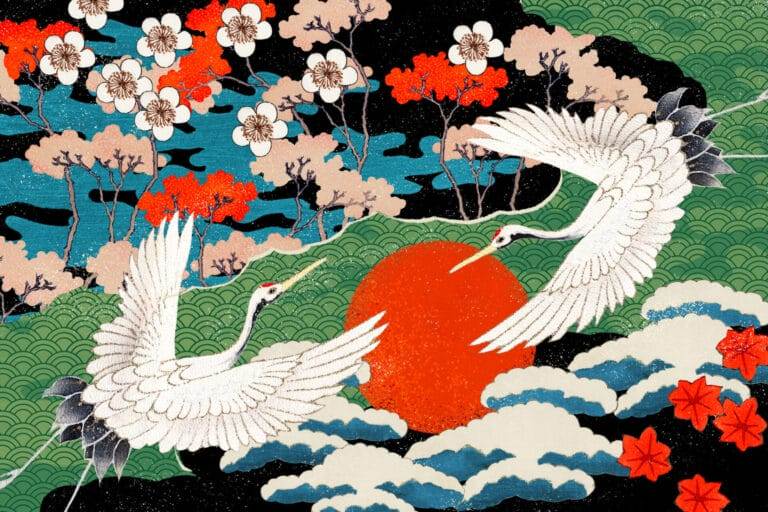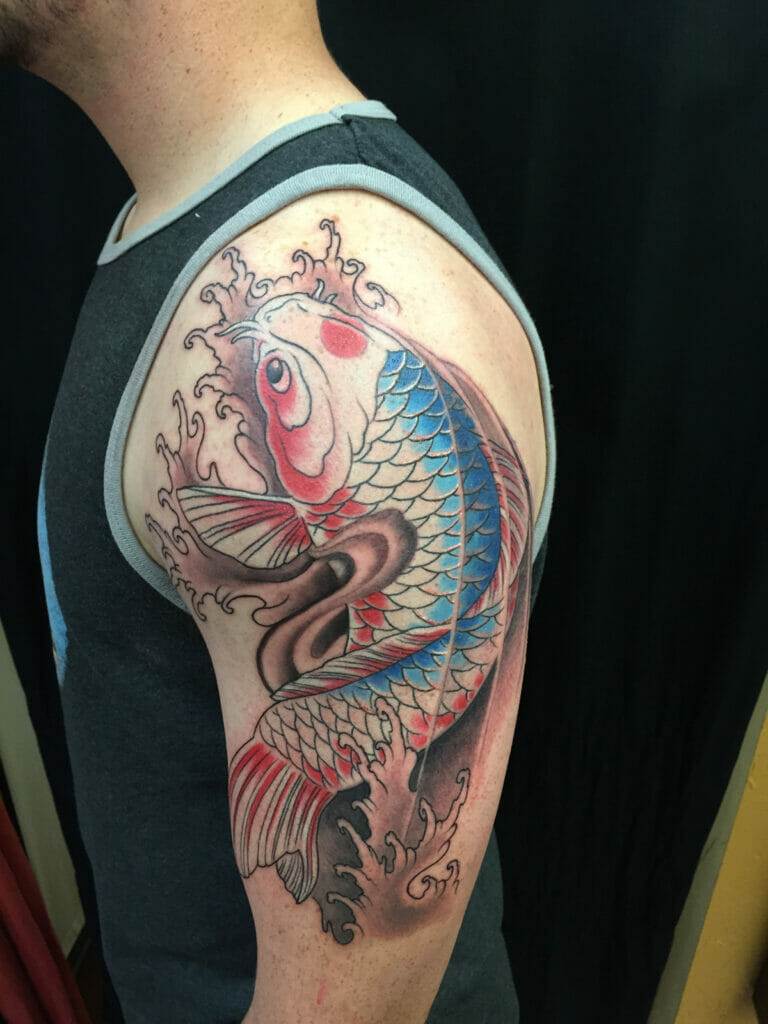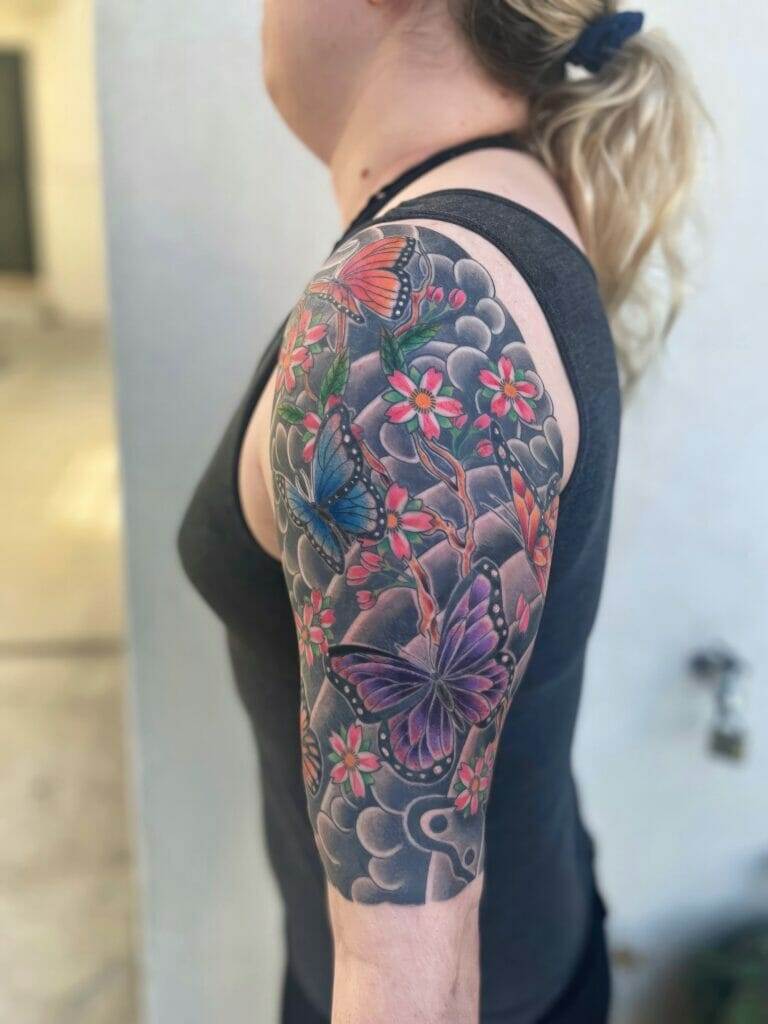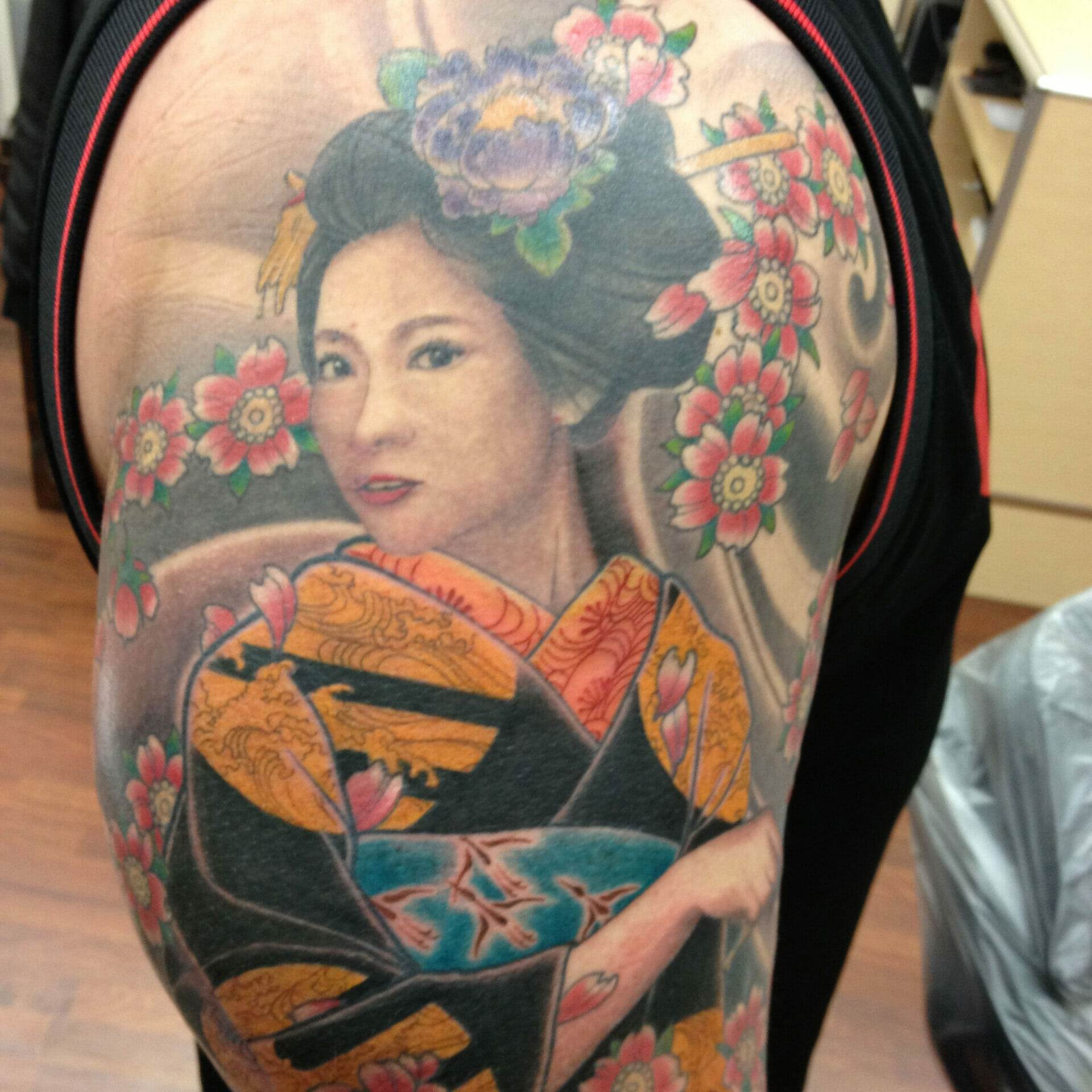
Japanese style tattoos, also known as Irezumi, have a rich history and are deeply rooted in Japanese culture. The art of tattooing in Japan dates back thousands of years, with evidence of tattoos found on ancient clay figurines. However, it wasn’t until the Edo period (1603-1868) that tattoos became more prevalent and began to take on a distinct style.
During this time, tattoos were primarily associated with criminals and outcasts, as they were used as a form of punishment and identification. However, there were also individuals who chose to get tattoos for decorative purposes, often depicting traditional Japanese motifs such as dragons, koi fish, and cherry blossoms.
Traditional Japanese tattooing techniques involve using a hand-held tool called a tebori, which consists of multiple needles attached to a wooden or metal handle. The artist dips the needles into ink and then manually punctures the skin to create the desired design. This method allows for more control and precision compared to modern tattoo machines.
Key Takeaways
- Japanese style tattoos have a rich history and cultural significance.
- Traditional Japanese tattoo designs often feature animals, flowers, and mythological creatures.
- Modern interpretations of Japanese tattoos incorporate elements of Western tattooing styles.
- Japanese tattoo artists use unique techniques such as tebori, or hand-poking, to create intricate designs.
- Proper aftercare is crucial for maintaining the quality and longevity of a Japanese style tattoo.
Traditional Japanese Tattoo Designs
Traditional Japanese tattoo designs are known for their bold lines, vibrant colors, and intricate details. Some of the most popular motifs include koi fish, dragons, cherry blossoms, and geisha.
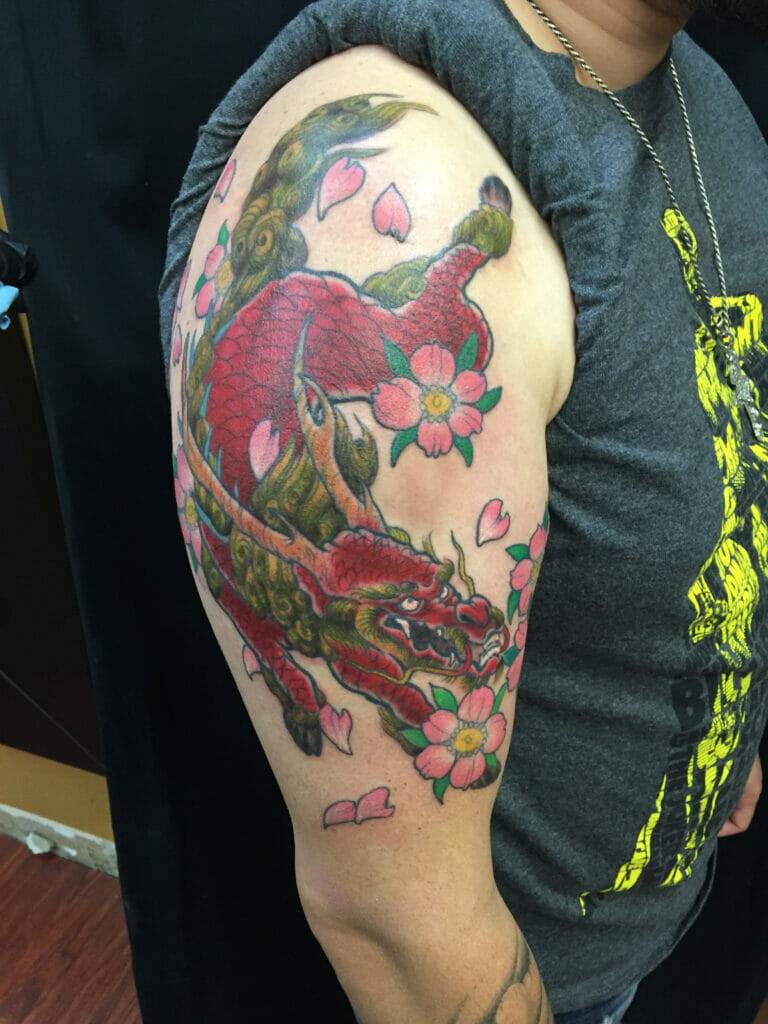
Koi fish symbolize strength, perseverance, and determination. In Japanese folklore, it is believed that if a koi fish is able to swim upstream and reach the top of a waterfall, it will transform into a dragon. This represents overcoming adversity and achieving success.
Dragons are another common design in Japanese tattoos and are seen as powerful and benevolent creatures. They are often depicted with multiple claws, scales, and horns. Dragons symbolize wisdom, strength, and protection.
Cherry blossoms are a symbol of beauty and the transient nature of life. They represent the fleeting nature of existence and remind us to appreciate the present moment. Cherry blossoms are often depicted in full bloom, with delicate petals cascading down.
Geisha tattoos are a popular choice for those who appreciate the elegance and grace of Japanese culture. Geishas are highly skilled entertainers who are trained in various traditional arts such as dance, music, and tea ceremonies. They represent beauty, femininity, and sophistication.
Modern Interpretations of Japanese Tattoos
Over time, Japanese tattoos have evolved and taken on new forms. While traditional designs are still popular, many people now choose to incorporate elements from other tattoo styles such as realism, watercolor, and blackwork.
Modern interpretations of traditional Japanese designs often feature a fusion of different styles and techniques. For example, a koi fish may be depicted in a realistic style with vibrant colors, while still maintaining the bold lines and overall composition of a traditional Japanese tattoo.
Another trend in modern Japanese tattoos is the use of negative space. This involves leaving certain areas of the design blank or lightly shaded to create contrast and depth. This technique adds a contemporary twist to traditional motifs and allows for more creativity and experimentation.
The Significance of Japanese Tattoos
| Aspect | Information |
|---|---|
| History | Japanese tattoos have a long history dating back to the Jomon period (10,000 BCE – 300 BCE). |
| Meaning | Japanese tattoos often depict traditional Japanese motifs such as dragons, koi fish, and cherry blossoms, each with their own symbolic meaning. |
| Technique | Traditional Japanese tattoos are created using a hand-held needle called a tebori, which is dipped in ink and inserted into the skin. |
| Taboo | Japanese tattoos were once associated with criminal activity and were banned in Japan for many years. |
| Popularity | Today, Japanese tattoos are popular around the world and are considered a form of art and self-expression. |
Japanese tattoos hold great cultural significance and are deeply rooted in Japanese history and mythology. They are seen as a form of self-expression and a way to honor one’s heritage.
In addition to their aesthetic appeal, Japanese tattoos also carry spiritual and symbolic meanings. For example, dragons symbolize wisdom, strength, and protection, while cherry blossoms represent the transient nature of life. These symbols serve as reminders to live with purpose and appreciate the beauty in every moment.
Japanese tattoos also hold social significance in Japan. While attitudes towards tattoos have become more accepting in recent years, there is still some stigma attached to visible tattoos in certain settings such as traditional bathhouses or public pools. However, many people choose to get tattoos as a form of rebellion or to express their individuality.
Japanese Tattoos in Popular Culture

Japanese tattoos have been portrayed in popular culture in various forms, including movies, TV shows, and music videos. They are often associated with the Yakuza, a Japanese organized crime syndicate.
One notable example is the movie “The Girl with the Dragon Tattoo,” based on the novel by Stieg Larsson. The main character, Lisbeth Salander, has a large dragon tattoo on her back, which symbolizes her strength and resilience.
In the TV show “Prison Break,” one of the main characters, Michael Scofield, has a full-body tattoo that contains the blueprints of the prison he is trying to escape from. This tattoo serves as a key plot device and symbolizes his determination and resourcefulness.
Japanese tattoos have also been featured in music videos, particularly in the rock and metal genres. Bands such as Avenged Sevenfold and Bring Me The Horizon have incorporated Japanese-inspired imagery into their music videos, further popularizing the style.
Choosing the Right Japanese Tattoo Design
Choosing the right Japanese tattoo design is an important decision that should be carefully considered. Here are some tips to help you make the right choice:
1. Research traditional Japanese motifs: Familiarize yourself with the different traditional Japanese motifs such as dragons, koi fish, and cherry blossoms. Learn about their meanings and symbolism to find a design that resonates with you.
2. Consider size and placement: Think about where you want to place your tattoo and how big you want it to be. Keep in mind that certain designs may work better in certain areas of the body due to their shape and size.
3. Personal meaning: Choose a design that holds personal meaning for you. Whether it’s a symbol that represents a significant event or a design that reflects your personality, make sure it has a special significance to you.
4. Consult with a tattoo artist: Once you have an idea of what you want, consult with a professional tattoo artist who specializes in Japanese tattoos. They can provide guidance and help bring your vision to life.
Caring for Your Japanese Style Tattoo
Properly caring for your Japanese style tattoo is essential to ensure its longevity and vibrancy. Here are some tips to help you keep your tattoo looking its best:
1. Follow aftercare instructions: After getting your tattoo, your artist will provide you with specific aftercare instructions. Follow these instructions carefully to prevent infection and promote proper healing.
2. Avoid direct sunlight: Excessive exposure to sunlight can cause your tattoo to fade over time. Protect your tattoo by applying sunscreen with a high SPF whenever it is exposed to the sun.
3. Moisturize regularly: Keep your tattoo moisturized by applying a fragrance-free lotion or ointment. This will help prevent dryness and keep the colors looking vibrant.
4. Avoid swimming: Avoid swimming in pools, hot tubs, or the ocean until your tattoo is fully healed. These environments can expose your tattoo to bacteria and chemicals that can cause infection or fading.
5. Touch-ups: Over time, tattoos may fade or lose their vibrancy. Consider scheduling touch-up sessions with your tattoo artist to keep your tattoo looking fresh and vibrant.
In conclusion, Japanese style tattoos have a rich history and hold great cultural significance. They are known for their bold lines, vibrant colors, and intricate details. Traditional Japanese tattoo designs such as koi fish, dragons, and cherry blossoms carry deep symbolic meanings. Over time, Japanese tattoos have evolved and taken on new forms, incorporating elements from other tattoo styles. Japanese tattoos have been portrayed in popular culture in various forms, including movies, TV shows, and music videos. Pacific Beach in San Diego is home to a vibrant Japanese tattoo scene, with several tattoo shops specializing in traditional Japanese tattoos. When choosing a Japanese tattoo design, it’s important to consider factors such as size, placement, and personal meaning. Properly caring for your Japanese style tattoo is essential to ensure its longevity and vibrancy. By following these tips, you can keep your tattoo looking its best for years to come.
If you’re interested in learning about the evolution of Japanese tattoos, from their origins as criminal markings to their current status as artistic expression, check out this fascinating article from Redemption Ink. It explores the historical and cultural significance of traditional Japanese tattoos, as well as the modern interpretations that have emerged over time. Discover how these tattoos have evolved and gained global influence in the world of tattoo art. Read more here.
FAQs
What are Japanese style tattoos?
Japanese style tattoos are tattoos that are inspired by traditional Japanese art and culture. They often feature images of dragons, koi fish, cherry blossoms, and other elements of Japanese folklore and mythology.
What are traditional Japanese tattoo designs?
Traditional Japanese tattoo designs are known as irezumi. They often feature large, intricate designs that cover large portions of the body. Common motifs include dragons, tigers, koi fish, and other animals, as well as flowers, waves, and other natural elements.
What are modern interpretations of Japanese style tattoos?
Modern interpretations of Japanese style tattoos often incorporate elements of traditional designs, but also incorporate more contemporary elements and styles. For example, a modern Japanese style tattoo might feature a traditional dragon design, but with a more abstract or stylized interpretation.
What is the significance of Japanese style tattoos?
In Japanese culture, tattoos have a long and complex history. They were originally associated with criminal gangs and were seen as a mark of shame. However, over time, tattoos became more accepted and were associated with bravery, strength, and honor. Today, Japanese style tattoos are often seen as a way to express one’s connection to Japanese culture and tradition.
What are some common techniques used in Japanese style tattoos?
Some common techniques used in Japanese style tattoos include tebori, which is a traditional hand-poking technique, and irezumi, which involves using a needle attached to a wooden handle to create intricate designs. Other techniques include shading, color blending, and dotwork.

